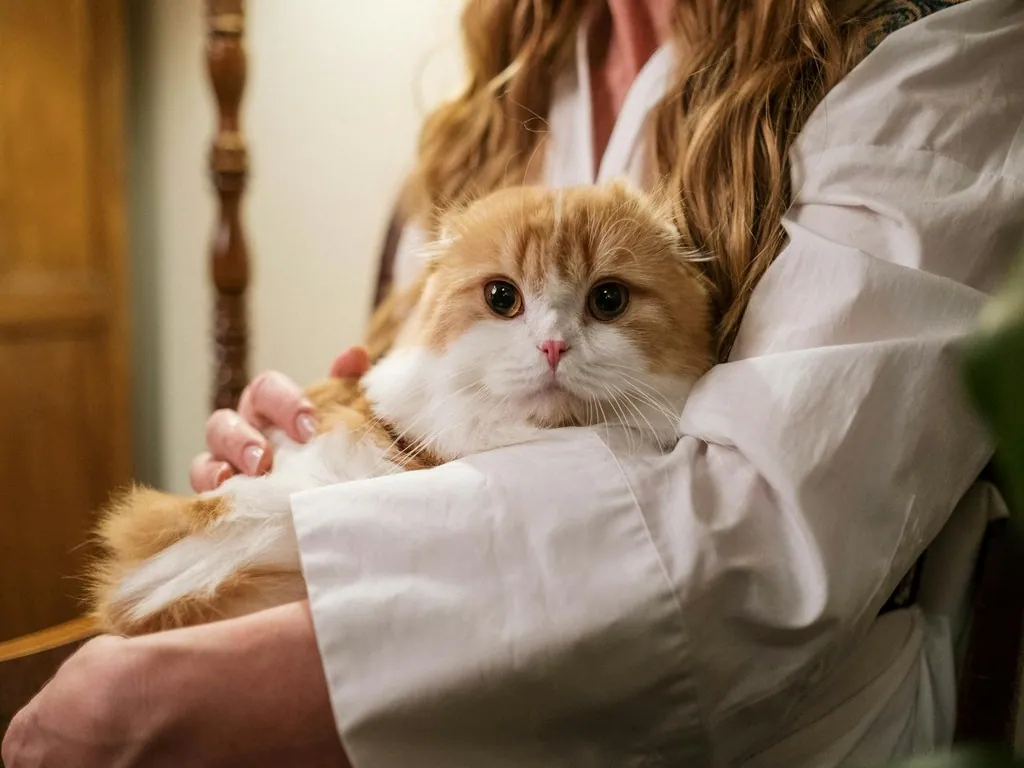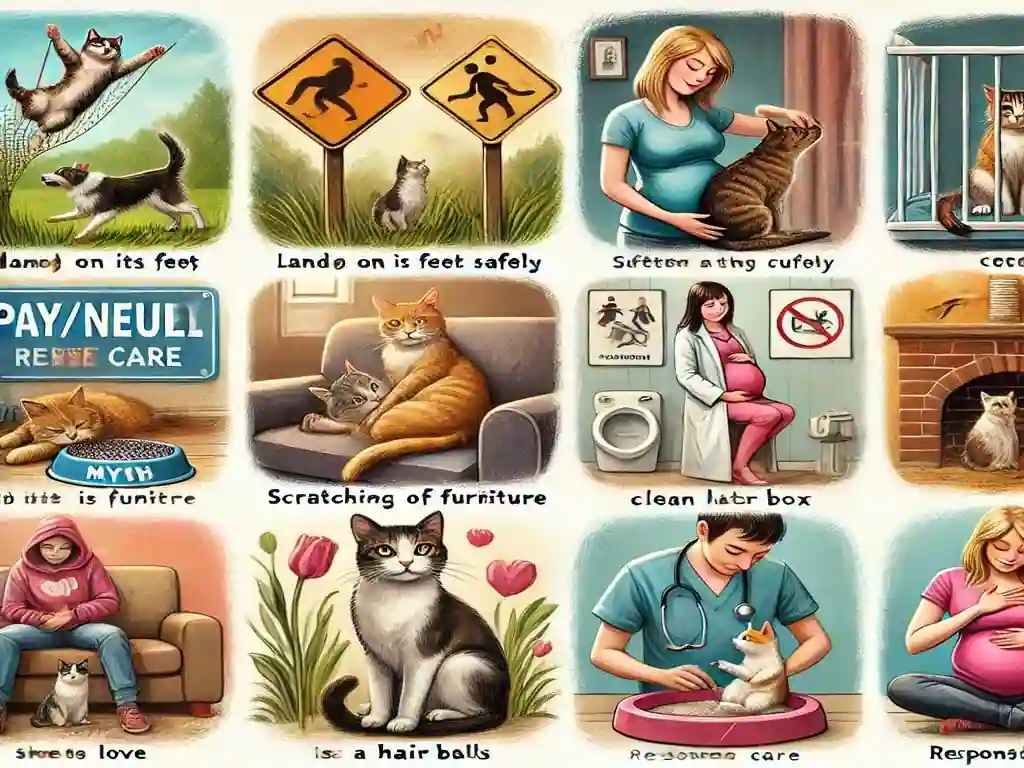CAT
How Much Do Servals Eat a Day? A Complete Guide to Serval Nutrition

How Much Do Servals Eat a Day?
Servals are the most beautiful wild cats with slim bodies, long legs, and wonderful spotted coats. They are natives of Africa and are mostly admired for their hunting skills and agility. However, most people wonder how much servals eat a day. The feeding habits of servals will be discussed in detail, including their preferred food, feeding cost, and the difference in their diet in the wild versus in captivity.
How Much Food Does a Serval Eat Per Day?
Servals are cat species, normally of medium size but with quite a huge mouth. The wild serval normally eats about 1-1.5 kg of food a day, although its diet mainly focuses on small animals such as rodents, birds, frogs, and insects. Due to the highly active way of life that the carnivorous animal maintains, one must consume much more to stay in top energy performance and make their agility hunting good.
Servants in captivity eat varying amounts of food depending on their size, activity, and overall health. A serval in captivity would need around 900 grams to 1.5 kilogram rams raw meat daily which can be a mix of chicken, rabbit, and small game for balanced and healthy feeding.
To compare this with domestic cat breeds, you might find it interesting how specialized diets are important for healthy development, as seen with professional cat breeders in Scotland who ensure their felines receive optimal nutrition. Learn more about their approach here.
What Is a Serval’s Favorite Food?
In the wild, servals are an opportunistic hunter; as a result, they consume anything they find their way to. They like to consume the following though;
Rodents: The mice and rats form a basic chunk of the daily ingestion as small mammals.
Birds: Using their great sensitivity of hearing and long-length legs, servals prefer to capture birds either by surprise from mid-flight when these are in tall grasses.
Frogs and Fish: Their hunt takes place underwater to get frogs or little fish.
Insects: GrassHoppers and beetles are one of the favorites because the cats are rather petite to supplement the meal even.
Since the hunting sharp edge does its work it means killing nearly half the attempts out, a proportionally greater capture than almost every one of their kind of those roaming free.
How Much Does It Cost to Feed a Serval?
Feeding a serval in captivity is not inexpensive as it has high dietary needs with the raw meat, bones, and supplements so feeding a serval may be priced from $10 to 20 dollars per day, even more expensive. Feeding a serval easily brings the cost up to above $300 to $600 per month. This is similar to the high maintenance cost of certain dog breeds, like the gray husky puppy, where careful diet management is crucial to ensure proper growth and health. You can read more about feeding and care tips for gray huskies read more
It’s a fact that servals need to be fed on an almost wild diet, with the best part being the diet must be well balanced. Most owners of servals feed them on raw diets available in the market, especially those prepared for exotic cats. Others have fresh meat from butcheries in their local towns. In addition to the raw diet, servals are supplemented with vitamins and minerals, which add more to feeding costs.
What Do Serval Cats Eat in Captivity?
Servants are typically fed a diet in captivity that closely mirrors their natural eating habits. Most of their diet in captivity consists of the following:
Raw meats: Chicken, rabbit, turkey, and game meats are common choices.
Organ meats: Servals require a variety of organ meats such as liver and kidney to receive essential nutrients.
Whole prey: Some owners or zoos provide whole prey, such as frozen rodents or birds, which gives them a more natural feeding experience.
Bones: Chewing on bones is essential for their dental health and adds to their nutritional intake.
Supplements: In captivity, they might need some extra supplements of calcium and taurine if whole prey is not regularly served.
They are not fed with commercially prepared foods meant for house cats as they have others’ nutrient needs. A serval well fed in the captive will remain healthy with its correct weight, excellent energy level, and a very well health condition.
How Servals Hunt and Digest Their Food
Servants are also skilled hunters. Since their hearing is acute, they can detect the least rustling of the grass from which their prey could be hiding. When a serval has identified its prey, it springs from the ground and uses its long legs to leap toward its prey with a high level of accuracy. This manner of hunting allows them to trap animals that hide within thick undergrowth.
Servants will devour their prey whole, and they ingest it along with bones and fur. That gives the serval some extra nutrients for further feeding and cleaning out its teeth. It is this well-balanced diet that has a servant’s digestive system perfectly balanced and in harmony.
Endnote
Knowing how much a serval eats in a day would be very important for it to receive the right diet, either in the wild or in captivity. The serval eats about 1-1.5 kilograms of food per day. It feeds on small mammals, birds, and other high-protein prey. Feeding a serval in captivity requires a thoughtful high-protein diet, with the cost of maintaining this diet running from $300 to $600 per month.
The feed should closely resemble their hunting strategy in the wild: a diet of live or fresh meats, bones, and supplements. It is very important to get the right balance to keep these wonderful cats energetic and healthy.
CAT
24 Essential Cat Care Tips to Keep Your Feline Happy and Healthy

Introduction
Being a great cat keeper is all about to assist your cat have a cheerful, blooming and fun life. Indeed small variations in your routine will be enough when it comes to brushing, playing, feeding and getting secure.
The following 24 techniques deal with common cat problems. They prove useful in your daily life, and they even strengthen the bonding between the owner and the cat. The main idea is the improvement of behavioral, health issues, and basic care to give your cat better quality life.
1. Use a Water Fountain to Encourage Hydration
Cats prefer moving water due to their natural instincts. In the wild, running water is safer and cleaner compared to stagnant sources. A water fountain can:
- Draw your cat in with the sound of running water.
- It keeps the water fresher and free from bacteria.
- Encourage more water intake in your cat and it may reduce the risk of kidney and bladder disorders.
2. Place the Fountain Away from the Food Bowl
In nature, cats avoid drinking water near their food source to prevent contamination. Place the water fountain:
- In a quiet, low-traffic area.
- Near a window for a calming view while drinking.
This small adjustment can significantly improve your cat’s hydration habits.
3. Put Some Green Tea Leaves in the Litter Box
Green tea controls smells and fights bacteria. Put dried green tea leaves in the litter box to:
- Eliminate offensive smells without harsh chemicals.
- Keep the area fresh for a longer time.
Tip: Change the tea leaves with each litter change for the best results.
4. Adding Little Baking Soda to the Litter Box
Baking soda has the unique ability to eliminate odor. Simply spread some food-grade baking soda at the bottom of the litter box right before adding fresh litter.
- Absorb remaining odors.
- Keep the litter box fresh much longer.
5. Protecting Surfaces
It is advised to temporarily use foil or double sided tape on the surfaces of tables or counters, in case your cat loves jumping.
Why is it useful?
- Cats dislike the crunchy sound of foil.
- The sticky texture of the tape prevents them from jumping on tables.
These materials can help train your cat to avoid certain areas.
6. Covering Furniture Legs using Sisal Rope
If you are worried that your pet may scratch your furniture legs, the best solution is to wrap the sisal rope around it.
- Satisfies their scratching instincts.
- Protect your furniture.
- Blends well with most home decors.
7. Add Fiber to Their Diet
Formation of hairballs results in digestive problems and irritation. It can be overcome by including fiber in your cat’s diet. You may consider the following alternatives:
- High-fiber cat foods.
- Natural snacks like small amounts of cooked pumpkin. It is advised to consult a vet before making any alterations in the diet pattern.
8. Brush Your Cat Regularly
Brushing your cat twice a week:
- Reduces loose hair and hairballs.
- Strengthens your bond.
- Leaves their coat softer and shinier. Use a brush suited to your cat’s coat type for best results.
9. Create Shelves for Climbing
Cats love to climb and explore. Wall-mounted shelves provide a safe space for:
- Climbing and exercising.
- Relaxing and observing their surroundings. Install shelves at varying heights and ensure they are securely attached.
10. Refresh Old Toys with Catnip
If your cat has lost interest in toys, revive them with catnip. Place the toys in a bag with catnip overnight. This:
- Stimulates their senses.
- Makes old toys feel new and fun. Use fresh, good-quality catnip for the best results.
11. Use an Air Purifier
Use of an air purifier can create good environment in your home because:
- It removes pet odors,keeps it free of dander, and allergens.
- It will make the globe a good place for your pet and family.
12. Familiarize Your Cat with the Carrier
Turn the carrier into a safe haven by:
- Leaving the door open.
- Adding a cozy blanket and favorite toy inside. This helps your cat associate the carrier with comfort, not just vet visits.
13. Get Pet Insurance
Veterinary bills can be quite huge if they are unexpected. While getting pet insurance, it will be confirmed that you can take care of your pet without any budget issues.
14. Protect Plants from Digging
If your cat digs in plant pots, try placing:
- Sticks, rocks, or branches on the soil. This discourages digging and enhances the aesthetic of your plants.
15. Use Natural Repellents
Cats feel irritation towards the odour of citrus and vinegar. Protect plants by:
- Placing orange or lemon peels around them.
- Spraying a vinegar-water mix on the leaves (test first to ensure it’s safe for the plant).
16. Use a Sink for Bathing
Bathing your cat in a sink instead of a bathtub:
- Lessen intimidation due to the smaller space.
- Makes handling easier. Place a towel on the sink bottom to avoid slipping.
17. Use a Flat Plate to Avoid Whisker Stress
Whisker stress occurs when a cat’s whiskers touch the edges of a bowl. Use a flat or shallow plate to:
- Improve their eating experience.
- Reduce food waste.
18. Prevent Toilet Paper Unrolling
Stop your cat from unrolling toilet paper by:
- Securing it with a rubber band or clip.
- Spraying the area with a citrus scent to discourage the behavior.
19. Make a Food Puzzle
Turn an empty bottle into a food puzzle by:
- Cutting small holes in it.
- Filling it with kibble. This slows down eating, aids digestion, and keeps your cat entertained.
20. Train Your Cat with a Clicker
Positive reinforcement works wonders with cats. Use a clicker and treats to:
- Mark desired behaviors (e.g., getting off furniture).
- Reward compliance with a treat. With patience and consistency, you can train your cat effectively.
21. Use a Pheromone Diffuser
Pheromone diffusers help calm cats during stressful situations such as:
- Moving.
- Introducing a new pet or family member.
- Storms or fireworks.
22. Draw a Chalk Circle Around the Food Dish
Chalk contains compounds that bugs avoid. Draw a circle around your cat’s food dish to keep pests away.
23. Place the Dish in Water
In order to keep insects away from the food items, keep it in a shallow tray of water. Ensure the water level doesn’t bother your cat.
24. Neutralizing Urine Stains
If your cat has an accident, clean it quickly using:
- Use vinegar for purifying and killing germs.
- Use of baking soda can offset the smells. Spread a small amount of baking soda on the respective part after the application of vinegar, let it settle, and clean it away.
FAQs
1. What is the frequency for brushing my cat?
Brush your cat two times a week to remove loose hair, stop tangles, and reduce shedding. Brushing also stops hairballs and keeps the coat shiny and healthy.The long-haired cat will often need more frequent grooming to prevent mats.
2. Can I use regular baking soda in the litter box?
Yes, you can indeed use food-grade baking soda in the litter box, but be sure to use them in moderation because excesses can irritate your cat’s paws or even their respiratory system. The end.
3. Are natural repellents safe for my cat?
Natural deterrents like citrus peels and diluted vinegar are relatively nontoxic, though these need to be placed in a well-ventilated area, as they are poisonous if ingested by your feline pet, away from food or water sources. Do a patch test to check on whether your cat is going to react badly to these deterrents.
4. How do I train my cat with a clicker?
Use a clicker and mark the desired behavior as soon as it happens. Immediately reward him with a treat. Over time, this will always enable your cat to associate the sound with rewards. Remember, be patient and use short, fun training sessions.
5. What’s the best way to bathe a cat?
Place a towel in a sink or tub so it won’t slide around, and use warm water and mild pet shampoo. Bathe your cat slowly, keeping away from their face, and rinse well. Gently pat them dry with a towel and give them a treat afterwards for a good experience.
Also read: https://skystylus.com/debunking-9-most-common-cat-myths
CAT
Debunking 9 Most Common Cat Myths: Eye-Opening Facts About Feline Behavior and Care

Introduction
Cats are quite interesting, yet over the ages, so many myths have come to shroud our knowledge about these marvelous pets. Although some of the myths may not affect people adversely, others might badly influence the manner in which individuals perceive and relate to cats.
This article endeavors to debunk the truth about 9 most common cat myths and illustrate how knowledge of facts can help in improving the human-cat relationship.
1. Cats always land on their paws
First of the 9 common cat myths is that they have some kind of magic that allows them to land on their feet regardless of the distance they fell. This myth, though originating from their amazing air-righting reflex, is very misleading. This reflex does help the cats twist their bodies mid-air in an attempt to land safely, but it’s not infallible.
They do not have enough time to reposition themselves in cases of short falls, and they are likely to suffer serious injuries, such as fractures and internal damage, with very high falls. Protect your cat from falling by setting safety nets on windows and balconies, supervising them in elevated areas, and providing safe stimulation indoors to avoid risky behavior. It is one’s responsibility, reflecting true love and care for a cat’s safety.
2. Cats Scratch Everything
Many prospective cat owners are concerned that their homes will be turned into a scratching war zone. However, scratching is an instinctive and necessary behavior in cats, not a form of rebellion or meanness.
Three reasons why cats scratch:
- Marking Territory: They leave visual marks and pheromones to claim ownership of a space.
- Nail Care: Scratching helps remove dead nail layers and keep claws healthy.
- Stretching and Strengthening: This activity will help contribute to their physical fitness and flexibility.
To protect your furniture, place scratching posts that have the favorite textures of your cat, such as cardboard or sisal, strategically near areas where your cat is already scratching. Reward your cat for using the posts by praising them, and use double-sided tape on the furniture temporarily.
3. Cats are unkind and treacherous
The stereotype that cats are cold or selfish has wronged these friendly animals. While cats are instinctively independent – unlike dogs-they are usually misconstrued as aloof.
Studies, such as those conducted at Oregon State University, show that cats form deep bonds with their owners, similar to the attachment children feel toward caregivers. Cats express affection uniquely, such as purring, rubbing against your legs, or giving “cat kisses” with slow blinks. Building trust with a cat requires patience, but the reward is a loving relationship based on mutual respect.
4. Pregnant Women Should Avoid Cats
Among the widespread common cat myths about cats is that pregnant women should leave their cats behind since the parasite can be transmitted through them. However, the risk of infection with toxoplasmosis from a well-cared-for cat is very low.
The parasite is actually acquired from the ingestion of undercooked meat, contaminated water, or even unwashed fruits and vegetables and not from cats directly. Even common hygiene measures, such as the regular cleaning of the litter box, proper washing after it’s been touched, and a balanced diet containing commercial or cooked food, reduce the risk nearly to zero. Pregnant women can retain their pet cats.
5. Cats Don’t Get Along With Dogs
This idiom has enabled the misconception to linger that cats and dogs are one another’s enemies. Though they portray a different form of behavior and body language, cats and dogs may be friends provided they meet well.
Start by gradually exposing them to each other’s scent and create safe havens separate from one another. Observe the introduction carefully, and once everything is calm and respectful, reward. Cats and dogs can become best buddies, all through patience and proper introduction.
6. Cats Can’t Learn Tricks
Among common cat myths is the one that the cats lack the ability to learn tricks like other pets. This is far from the truth since, although cats may not as easily exhibit enthusiasm to please their owners like canines do, cats are intelligent and curious animals that can learn tricks with the right motivation.
Great to have some positive reinforcement like treats or sweet words. The training sessions should be kept short and interesting for them as per their attention span. Tricks are a good way to stimulate your cat’s mind and also strengthen the bond between you and your feline friend.
7. It’s Normal for Cats to Pass Hairballs Often
Hairballs seem like a normal thing to happen in cats, but repeated instances of them may indicate some underlying health issues. Cats naturally groom themselves by swallowing hair, and this usually comes out with the digestive process.
Hairballs vomiting more than usual might be a symptom of excessive grooming resulting from stress, shedding, or skin problems. Prevent hairballs by brushing the cat regularly, giving it a fiber diet, and hydrating it. Bring the cat back to a veterinarian for follow-up treatments if hairballs persist, with the aim to ensure that she does not incur intestinal blockage.
8. Cats cannot love their human owners
Science has proven contrary to popular thought that says cats are uninterested as they possess secure attachments with their owners. They love quietly by purring, rubbing themselves against you, or sleeping next to you.
It often is misunderstood as aloofness; it just proves that the cat is an independent animal and it’s not a lack of love. Research has proven it reduces stress; improves cardiovascular health and gives companionship when living with the cat. They are very affectionate creatures but express it in such a subtle and meaningful way.
9. Cats Should Be Mothers at Least Once
Most damaging of the 9 common cat myths is that cats have to give birth to kittens to be fulfilled. In reality, cats, unlike human beings, are not driven to procreate due to emotional needs. Permitting a cat to have kittens does nothing to improve her quality of life; she is needlessly exposed to health risks.
The most significant benefits include prevention of overpopulation and decreasing the risk for some diseases like uterine infections and cancers. It’s the responsible way toward better health in general for both your pet and the feline population.
Endnote
Cats are wonderful, but myths and misconceptions oftentimes lead one astray. Let’s address some of those myths and lay the truth upon them so one can better care for and adore these wonderful furry friends.
Do you have any other cat myths except for these 9 common cat myths that we should hear in the comments below? The adventure continues with discovering the truth behind these animals.
Also read: https://skystylus.com/how-to-transition-your-cats-diet
CAT
10 Things I Wish I Knew Before Bringing a Cat Home: Expert Advice for First-Time Cat Parents

Introduction
Bringing a cat to live with you is the milestone for many, yet comes with its own difficulties. Cats are interesting pets and present unique needs and behavior patterns, and most importantly, understanding these small aspects would make all the difference to create a warm house.
Based on my 30 years of experience as a cat owner, I have outlined these few tips that I wish had come early in my kitty rearing days. In this guide we will cover 10 things I wish I knew before bringing a cat home will help you prepare for a joyful and enriching relationship with your new feline friend.
1. Introducing Cats to Other Pets
A step by step approach, patience and proper preparation is essential before introducing your cat to a new pet. It is more than just “letting them sort it out.” A well planned introduction can avoid stress and the chances of conflict.
For Dogs
- It is necessary that you dog understands the basic commands of obedience like sit, stay prior to introduction to a cat
- Leash them initially to make sure they don’t cause chasing behavior, which sometimes frightens the cat, and sometimes leads to years of tension.
For Other Cats:
- Create separate spaces with separate food, water, and litter resources for both cats during the adjustment phase.
- Use scent-swapping by exchanging bedding or toys between them to help them acclimate to each other’s scents before they meet each other face-to-face.
Pro Tip: Many Internet resources and tutorials offer easy step-by-step instructions regarding how to introduce cats to other pets. Check out the video guides for more helpful information!
2. Maintaining Boundaries: Litter and Food
The needs of cats and dogs differ when it comes to requirements like food and litter. Without proper management, it creates a hub for conflicts and health issues.
- Litter Box Access: Dogs consider litter boxes as snack bars (gross, but true). Prevent this by putting litter boxes in areas accessible to cats but out of reach for dogs—like behind baby gates or on higher levels.
- Food Separation: Cats are obligate carnivores and should not eat dog food, as it lacks essential nutrients like taurine. Similarly, dog diets are not formulated for cats. Feed them in separate spaces to ensure each pet has access to the right nutrition.
3. Regular Nail Trimming
If the cat’s nails are neglected, then painful problems can arise such as when overgrown claws dig into the paw pads. Trims every 3–4 weeks prevent injuries, damage to furniture, and those nasty scratches.
- Start trimming when your cat is young and make it a routine.
- Use cat-specific nail clippers, and reward them with treats so they associate them with pleasant experiences.
4. Understanding Proper Nutrition
Other animals have drastically different nutritional requirements than domestic cats. Indeed, these are obligate carnivores and, consequently, thrive on meat.
- Wet food vs. dry food: Wet food is closer to their natural diet and adds hydration. Cats rarely drink enough water, but with wet food they avoid dehydration and urinary tract problems.
- High-Quality Brands: Opt for reputable brands with real meat as the first ingredient. Avoid foods with fillers like corn or soy, which have minimal nutritional value.
Lesson Learned: My first cat developed diabetes because of the unbalanced diet. Always consult your vet for recommendations on what to feed your cat.
5. The Importance of Enrichment
In comparison to dogs, cats comparatively require low maintenance. But still, they need a lot of physical & mental stimulation to really prosper.
- Daily Play Time: Engage them in interactive play by distributing toys such as wand teasers or laser pointers for physical activity.
- Catification: Cats love climbing and perching. Install shelves, provide scratching posts, and invest in a sturdy cat tree to give them spaces to explore and feel safe.
Enrichment is not only about keeping your cat entertained but also regarding a mental health matter.
6. Cat-Proofing Your Home
Cats are natural explorers, but sometimes this may end them in trouble. To avoid any mishap, you have to make your home cat proof.
- Secure Hazards: Lock cabinets to a child-resistant state so that cleaning products, medications, or other toxic materials are inaccessible.
- Eliminate Dangers: Hide electrical cords, remove poisonous plants, and block off small spaces where your cat could get stuck.
- Keep Valuables Safe: Cats love to knock things over—secure breakables or place them out of reach.
7. Building a Support Team
Having a reliable support system is essential when you’re a pet owner. Whether it’s for routine care or emergencies, establishing connections with professionals will make your life easier.
- Veterinarian: Choose a vet to research on before taking your cat home. Seek reviews and referrals from pet owners.
- Find pet sitters: Find sitters who are bonded and insured; some cat owners also employ such service to cater for their cat’s needs.
8. Investing in Pet Insurance
It is a very wise approach to insure your cat. Otherwise, bills especially veterinary costs can become a burden
- What to Look For: Consider a plan that provides security for injuries, sickness and routine care. Consider parameters such as monthly premiums, debits and compensation rates.
- Start Early: It is advised to apply for insurance as soon as possible, because the conditions a cat suffering prior to insurance are usually exempted.
9. Emergency Preparedness
Caution is better than cure. So, it is much better to make a plan for the safety of yours cat before a random disaster.
- Emergency Kit: Prepare a go-bag of food, water, medicines, and a copy of the medical records of your cat.
- Familiarization with Carriers: Allow your cat to associate their carrier with pleasant experiences by leaving the door open at home and occasionally placing treats inside. This helps to minimize fear during emergency or vet visits.
10. Understanding the History of Cats
Cats’ behavior today is deeply rooted in their evolutionary history. Knowing more about their instincts can help you address behavioral issues.
- Scratching: This behavior is not about destruction; it’s the way cats mark their territory and keep their claws healthy. Offer scratching posts to channel this behavior.
- Climbing: In the wild, cats climb to escape predators and survey their surroundings. Giving your cat vertical spaces satisfies this natural urge.
Understanding your cat’s needs isn’t about following the rules; it’s about fostering a deeper bond.
Conclusion
In the end, it is an amazing experience to bring a new cat home, but without proper preparation, all this may be reversed. By following all the tips given above, you can better be able to familiarize your cat with other pets in the house.
Final Tip: Keep curious and keep learning. There is so much more to learn about becoming the best cat parent ever. Resources abound to help you get there. Here’s to many joyful moments with your new furry friend!
FAQ Section 10 Things I Wish I Knew Before Bringing a Cat Home
1. How do I introduce my new cat to my dog?
Try to keep them separate at the start and make a gradual introduction. In case, you are making a face to face interaction with a dog, use a leash and reward them to calm their behaviours.
2. Should I get pet insurance for my cat?
Surely, it can help to compensate for random medical costs that provide financial relief during emergencies.
3. What kind of food should I feed my cat?
As cats are carnivorous by nature, giving wet food impersonates their natural diet and keeps them hydrated. While high standard kibble can supplement their meals.
4. How often should I trim my cat’s nails?
Every 3-4 weeks to avoid excessive growth of nails.
5. How can I enrich my indoor cat’s life?
Toys such as puzzles and cat trees can engage them in physical activities that keep them mentally sharp as well.
Top 10 Warning Signs Your Cat Might Be Sick: Dr. Sarah Wooten’s Expert Guide for Feline Health






